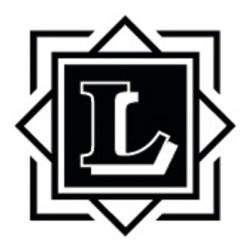Analysis
Wedgwood Museum Trust Ltd (the museum company) was insolvent. Directions were sought by the administrators of the museum company as to whether or not a unique museum collection of pottery and other artefacts built up over many years by Josiah Wedgwood and Sons Ltd (the trading company) was available to pay liabilities arising in the insolvency of the museum company.
The museum company was incorporated in 1962 and received the collection as a gift from the trading company in 1964. At the time of the gift, it was not contemplated that the museum company would acquire liabilities. The objective was to protect the collection from the trading misfortunes of the trading company. A deed of gift dated 1 July 1964 expressly provided that the collection would be held on trust for the museum company, with no reference to a charitable trust. The attorney general argued that the only way to give effect to the intention of those making the gift (ie a permanent and inalienable collection) was to construe the museum company not as beneficial owner but as trustee holding on special charitable trust.
Following the takeover of the trading company in 2009, the employment of those engaged in managing the museum had been transferred from the trading company to the museum company. This resulted in the museum company becoming a participating employer in the Wedgwood group pension plan. When the rest of the Wedgwood group of companies entered administration, the museum company (which had not been thought to be insolvent) became liable for the pension liabilities of all participating companies (estimated at £134.7m) in accordance with the ‘last man standing’ effect of the regulations made under the Pensions Act 1995. The museum company’s own pension liabilities were approximately £100,000. The collection was valued at between £11.5m and £18m.
Two questions arose. Firstly, whether the property was beneficially owned by the museum company or held on a special charitable trust, taking it outside the property available for distribution. Secondly, if the assets were held on a special trust, whether they should nonetheless be available to satisfy liabilities of the museum company via the trustee’s right of indemnity.
Held
- (1) Charitable companies may have different categories of assets. Some may be held on different particular charitable trusts and some may be held beneficially by the company to be applied for its general purposes. Such trusts may be brought about by express declaration or implied from a court of conduct consistent only with the existence of a charitable trust (para [14]). First instance authority held that charitable companies do not hold their assets on trust for their objects (para [15]). The general purposes of a charitable company are not trust purposes (para [22]).
- (2) The museum company’s memorandum and articles did not on their face create a charitable trust but permitted it to establish a special charitable trust. It does not follow from this that it did so (para [20]). Had the collection already been held on trust by the trading company, then the museum company (as a volunteer) would have acquired no better title than the trading company. That was not the case here (para [23]). Although ‘trustees’ were appointed by the annual general meetings of the trading company, they were custodians for the trading company itself and were not holding on separate charitable trusts (para [27]).
- (3) There was no evidence of anyone having donated to the museum company on a special charitable trust. The online donation form was consistent only with an outright gift. There is no reason to suppose earlier donations were on any other basis (para [43]). Accordingly, the collection is available to satisfy insolvency costs and the museum company’s liabilities to creditors (para [55]).
Obiter: the tragedy that befalls working people when their pensions are affected by insolvency is at least as great as the tragedy that has befallen, or may now befall, the collection in this case (para [56]).
Judgment HHJ PURLE QC: [1] This is an application in the course of the insolvency of Wedgwood Museum Trust Ltd (the museum company) by its administrators. They seek directions as to whether or not a collection, known as the Wedgwood collection, is available to meet the costs, charges and expenses of the insolvency, or the …Continue reading "Young & anr v HM Attorney General & ors [2011] EWHC 3782 (Ch)"

